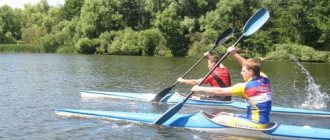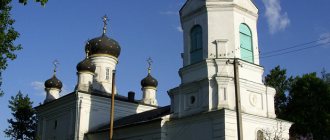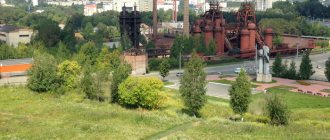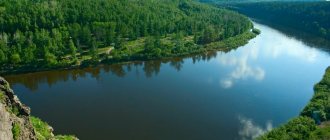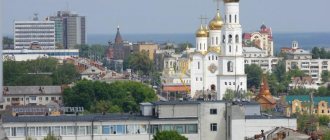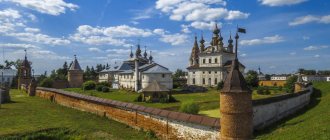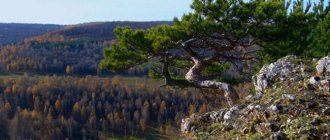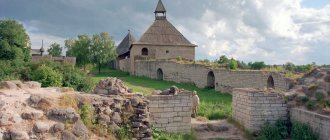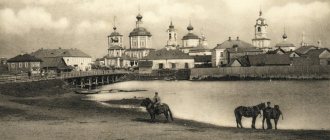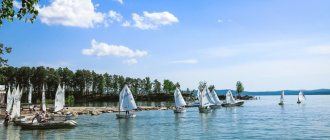Vytegra is a city and river in the Vologda region. The outskirts of the city are called Vytegoria. These places are for those who love pristine nature, solitude and... submarines. Although the city is located far from the shore of Lake Onega, it has its own submarine. Vytegra gave Russia many outstanding people - doctors, writers, poets and admirals.
In 1773, the settlement was given the status of a county center and given the name Vytegra
At Father Onego’s side
Vytegra is located in the extreme north-west of the Vologda region. The Vytegra River connects the city with Lake Onega, the shore of which is 15 kilometers away. The Volga-Baltic Canal, a powerful water transport artery, runs along the western edge. At this point, it expands greatly, forming the Vytegorsk reservoir. From Vytegra to Vologda - 360 kilometers, to Moscow - 791 kilometers, to St. Petersburg - 421 kilometers. The nearest railway station is 150 kilometers away, in Podporozhye.
Lake Onega
The surroundings of Vytegra are distinguished by beautiful nature. The main natural attraction and local tourist brand is the image of “Father Onego”. It personifies one of the largest lakes in North-West Russia. In Europe, Onega ranks second in size after Lake Ladoga. The entire northern part of the Vytegorsky district is the coast of Onega.
Neighborhoods of Vytegra
Of interest to tourists are the karst lakes Kushtozero, Shimozero, Undozero and Dolgozero. This is a real miracle of nature! The fact is that at the bottom of the funnels there are holes called ponora. Water comes and goes through them. Therefore, once you arrive at the lake, you can find a depression overgrown with grass. But when you return here a couple of years later, you can see the surface of the water again.
Among the unusual natural monuments, the Andoma geological section is also worth noting. It is a coastal cliff three kilometers long. The oldest deposits formed a series of stripes of different colors and shades. From them you can “read” the geological history of the last 400 million years. In fact, these are abstract paintings painted by nature itself.
The oldest sediments formed a series of stripes of different colors and shades
The place is so unusual that it is classified as magical. On the slopes of Andoma Mountain you can find fossilized ferns and former sea inhabitants, as well as rock crystals. You will be lucky if you find a piece of healing shungite. The geological monument is located near the villages of Klimovskaya, Gnevashevskaya and Olkovo.
From Vyanginskaya pier to the district town
In ancient times, the lands on the southern shore of Lake Onega were inhabited by all people who belong to the Finno-Ugric group and are the predecessors of modern Vepsians. No one knows the exact date of foundation of the Vytegorsky churchyard, but chronicles first mention it in 1496. In the 17th century, the village located in this place was called Vyangi. Later, on the initiative of Peter I, a large pier was built here, which became part of the infrastructure of the trade route from Arkhangelsk to St. Petersburg.
In ancient times, the lands on the southern shore of Lake Onega were inhabited by all the people
The pier was so important and was so famous that the settlement was called the Vyanginskaya pier. In 1717, a state shipyard was built here, which operated for more than a hundred years. In 1773, by decree of Catherine II, the settlement was given the status of a district center and given the name Vytegra. The name was given after the river on which it stood. Toponymy specialists have never been able to figure out the meaning of this Finno-Ugric word.
In 1810, the Mariinsky Canal with a system of locks was built. This dramatically increased the possibilities for ships to pass along the Vytegra. The city received a second wind. The depth of the navigable fairway reached four meters. This ensured the passage of large ships. After reconstruction in 1964, the canal was renamed the Volga-Baltic Way. It is still in active use, allowing ships with a displacement of up to 5 thousand tons to pass through.
This is what a typical home looked like in the old days
For almost forty years, Vytegorsky district was subordinate to the Olonets province. The importance of Vytegra was so great that the question of moving the capital of the Olonets province here, the role of which was performed by Petrozavodsk, was raised several times. If you look at the map, purely visually the Vytegorsky district is part of Karelia, rather than the modern Vologda region. However, fate decreed otherwise.
During Soviet times, the district became part of the Lodeynopolsky district of the Leningrad region, and in 1937 it was transferred to the jurisdiction of the Vologda region. Despite the remoteness, Vytegra did not escape the battles of the Second World War. Since 1941, part of the area was occupied by Finnish units who fought on the side of Germany. The turning point came only in the summer of 1944, when the Finns were thrown back towards Petrozavodsk.
Coat of arms of Vytegra
For Vytegra, Lake Onega was and is of great importance, which at all times supplied the city residents with fish. He was treated with great respect. For example, if a person needed an answer to an important question, he should ask himself, go ashore and wait. If Onego suddenly calmed down, the answer was positive. On the contrary, the sudden change of the water surface to ripples and waves meant a negative answer. It was believed that Father Onego knew everything.
Vytegra. An unexpected acquaintance
Content:
-What are you photographing here? - I’m photographing beauty. -What kind of beauty, excuse me, can be captured here? The ships are old, rusty, the houses are uninhabited. We should go and take a picture of the new hotel. It was built by the former mayor of the city. I turned around. An elderly woman stood behind me. Two cloth bags at her feet, full of some kind of food, stood on the wooden flooring of the porch of the boiler room. The boiler house itself is on the bank of the canal, from which there was a beautiful view of the embankment with old buildings, boats and ships moored. On the other bank there is a house with chaotically boarded up shutters, the domes of the temple are visible on the mountain, and a little to the left of me, on this bank, nearby are two people with fishing rods. Quiet. Gray evening skies of white nights, occasional drizzling rain and silent wind. A real Russian district pastoral. Beautiful.
Fishermen. Vytegra
-It seems to me that you are looking for some kind of negativity? Yes? – the woman looked at me carefully. -What does the negative have to do with it? – I asked. And I show what I shot on the camera screen. - Here, look. What a beautiful color for the house. The windows are boarded up. By color combination, by shape. “I like this,” I explain. – And then, there is something so poignant and touching in this abandonment of ours. For example, the way we often “restore” something seems negative to me. A mediocre, nesting doll, clumsy “remake”. It’s so messed up that sometimes you think it would be better not to restore it. They just ruined everything. Completely ruined.
“And this,” I point to what I was filming, “is simply beautiful.” Without positive and negative. Leaving beautifully.
an old house
An old house. Lilac
Old Canal
We talked to the woman. We chatted about this and that. She told me a lot of interesting things about Vytegra. Helped carry bags for a new friend. They wished each other well and went about their business. The woman goes home, I go for a walk along the city streets. Eh...I love such meetings. And such stories from those. who have lived in their native land since childhood.
By car to Vytegra. Map and description of roads E-105 ("Kola"), 41K - 001 and 19K - 013
From St. Petersburg by car you can get to Vytegra and the southern shore of Lake Onega by following the E-105 Kola to the north (Murmanka highway), turning at Lodeynoye Pole on Podporozhye onto road 41K - 001 . Further to the border of the Leningrad region with the Vologda region, where 41K - 001 turns into 19K - 013 . The road will change its name at the very border of the regions, at the very turn to Voznesenye (Leningrad region).
Road map and their condition:
Highway E-105 Kola (Murmanka) is an excellent road in terms of surface quality. There are some nuances. The highway is two-lane. At a distance of hundreds of kilometers from St. Petersburg, traffic is decent, due to the proximity of the metropolis. Because the traffic can be quite tense due to the flow of cars. Further, the further north you go, the easier it is. The road has always been excellent. There are no problems with the quality of asphalt and infrastructure (gas stations, cafes).
Road 41K - 001
From the turn at Lodeynoye Pole with E - 105 we go to the right. From here to Podporozhye the road is ideal. Two-lane, with fresh asphalt. All the way to Podporozhye. At the very entrance to the city you need to turn right, staying on the same 41K - 001 and go east to the very border of the Leningrad and Vologda regions. You need to be careful on this part of the path. The quality of the road surface at times leaves much to be desired. If near Podporozhye itself, on the bypass of the city, there is still fresh, good asphalt, then further on the road is somewhat worse. Irregularities, holes and potholes can appear quite unexpectedly and everywhere, alternating with pieces of patches of fresh asphalt. The only thing that can be added is that in any case, 41K - 001 has become much better than a few years ago. 41K - 001 is a two-lane, fairly wide local road. gas station, cafe or any infrastructure on it. As are the markings on most of the road. The road is asphalted, but for the most part it has been asphalted for a long time.
road 41K – 001 looks like after Podporozhye. The picture shows not the worst area. There is better, and there is also a little worse. In general, it’s quite a normal road.
Road 19K - 013
The route by car to Vytegra from the Leningrad region will also take 19K - 013. As soon as you cross the border of the Leningrad region and the Vologda region begins, the road will turn into a dirt, sand grader, and the asphalt will end. 19K – 013 begins here. The road goes through a dense forest, quite narrow, with a lot of turns, descents and ascents. Along the way, there are often timber trucks, which are not so easy to pass due to dust and the poor condition of the road itself and its surface. It could be much worse if there is decent rain. The road surface will turn into a muddy mess in some areas.
19K -013 looks like near the border of the Vologda and Leningrad regions. And this is one of the best areas. Further, deeper into the Vologda region, to the side and closer to Vytegra - it’s worse.
After a few km the grader will end and the asphalt will begin.
But it will be of such quality that you will gratefully remember the sandy surface of the grader you just happily passed. There will be no living space on this asphalt from holes and potholes. Like, for example, in the village of Oshta, through which you will pass.
After Oshta, the primer will begin again, but it will be much worse than the previous one. There will be much more timber trucks, oncoming and passing cars - similarly. The proximity of Vytegra has an effect. Already in front of it, there will be several sections with excellent and fresh asphalt. Which will end as quickly as they begin. You need to be careful. In the end, having overcome these (~75 km) you will enter Vytegra.
The roads in the city itself, however, are unlikely to please you with their condition.
In any case, driving to Vytegra by car along these roads is a definite pleasure. The path passes through the dense forests of southern Zaonezhye. There is a special thrill in this. And I liked it. I definitely want to come back here. I've seen worse roads. You just need to be careful, and all the vicissitudes of the road only add their own flavor.
According to the regular plan
It’s worth starting your acquaintance with the city with a walk through the historical center, where buildings from the 18th – early 20th centuries have been preserved. The rectangular network of streets indicates the regular development of the city. The master plan was developed in 1776. Its implementation was not easy. Initially, the houses were scattered chaotically along the river bank. For the sake of order, some of the buildings had to be moved, and some were completely demolished. It is clear that the owners of the houses were not happy about this. The core of the old city is located on the right bank of the Vytegra.
Crafts were developed in the city
The center of any city has always traditionally been considered the Trade Square. Since Vytegra was a major transport hub, at the end of the 18th century a large stone Gostiny Dvor was built on the square. Then in the center they erected a high stone vault with a tower - a room for weighing goods. The importance has survived to this day. But without a tower. Later the building was converted into a fire station. The square was especially crowded during fairs, which attracted traders and buyers from Vologda to Petrozavodsk.
The list of architectural monuments under state protection includes twenty items. Most of them are located on Lenin Avenue and on nearby streets. These are mainly residential buildings of wealthy citizens and urban estates. By the beginning of the 19th century, there were already five stone merchant mansions in Vytegra. The architecture of all buildings is ascetic - no pomp, pretentiousness or excess. Typical examples are the houses of the Nevezhins and Galashevsky on Lenin Avenue, opposite the Siversov Bridge.
Kalitki – traditional Vepsian baked goods
An exception is the Manin mansion at 56 Lenin Avenue. Its main façade is richly decorated. Stucco rosettes, elegant platbands, a balcony with a metal lattice - all these elements immediately attract attention. Minin's house is a real decoration of the central street of the city. The appearance of pre-revolutionary Vytegra was captured in history thanks to the works of the famous photographer Prokudin-Gorsky.
The main city landmark was once the Resurrection Cathedral, built in the Baroque style in 1800. Then it stood on the embankment of Voskresensky Prospekt. Alas, in Soviet times they decided to convert the temple into a House of Culture for Water Workers. To do this, the bell tower was dismantled, the domes and drums were removed. As a result, the cathedral completely lost its original appearance.
Antique millstone
The second important temple of the city was the Sretenskaya Church. It was built in 1873 on the left bank of the Vytegra. Not only the name of the architect A.S. Chetverukhin has been preserved in history, but also the name of the builder - Ivan Volkov, the head of an artel of masons from the village of Sloboda. The temple is a typical example of the Russian-Byzantine style. Situated on a high place, the church is clearly visible from everywhere. Currently, the building houses the exposition of the local history museum.
Ancient temples in the vicinity of the city
Next to the church there is a wooden chapel of St. Isaac of Dalmatia. It was built in 1881 in the shape of Monomakh's cap. A religious building appeared on this site relatively recently. The chapel was moved here from Besednaya Mountain. According to legend, on this mountain Peter I talked with local residents (hence the name) about the connection of the Vytegra and Kovzhi rivers. In the 1960s, during the construction of the Vytegorsky reservoir, the area was flooded, and the chapel had to be moved to another location.
On the waterway of the North
Vytegra is well known to Russian tourists. This is due to the fact that the popular cruise route along the Volgo-Balt passes through the city. During the navigation period, you can often see ships at the pier, making a stop on the way from the Northern capital to Moscow. On such days, tourists literally flood the small town.
Cruise ships make a stop in Vytegra
There are four museums in Vytegra. Acquaintance with the city usually begins with the local history museum, which recently turned 100 years old. The basis for its creation was the exhibits from the visual aids room of the local real school. Now the local history collection numbers tens of thousands of items. These include items of peasant life, examples of applied art, and masterpieces of northern icon painting.
The 16th century icons “Archangel Gabriel” and “John the Baptist” from the Assumption Church in the village of Devyatiny are considered rarities. The ceramics of Andoma masters attract attention with their unusualness. It is little known even among specialists, although bowls and pots of local potters have been in demand since ancient times. One of the craftsmen made a beautiful vase every year and sent it as a gift to the king himself. It is worth paying attention to Vytegor embroidery.
Bowls and pots made by local potters have been in demand since ancient times
The next museum is called “Waterways of the North”. It is dedicated to the history of the creation of the Volga-Baltic route. Even the location for the exhibition was chosen accordingly - the building of the former turbine hall of the Vytegorskaya hydroelectric power station. The exhibition includes not only ship models and lock models, but also dioramas. One of them is called “Barge Haulers on the Mariinsky Canal”. This trade route has been known since ancient times. The Novgorodians advanced along it to the White Sea. But only Peter I managed to turn it into a river “autobahn”.
Guests of Vytegra are invariably surprised by the B-440 submarine, which is permanently moored and is also a museum. She was built at the Novo-Admiralteysky plant in Leningrad and launched in 1970. The boat served in the Mediterranean, Barents, Norwegian Seas and the North-East Atlantic. The submarine was decommissioned in 1998, and in 2005 it was converted into a museum and moved to Vytegra. The boat has a working periscope. The excursions are accompanied by sound effects that simulate elements of combat.
Torpedo tube
The fourth museum is located in the former house of the merchant A. Loparev, where the poet Nikolai Klyuev lived in the 20s of the last century. Sergei Yesenin's friend and teacher was arrested and executed in 1937. After this, the poet’s name was banned in the USSR. Few people know that Klyuev was born and raised in Vytegorsky district, knew the life of peasants well, which was reflected in his poems.
At the beginning of the last century, he went to work in St. Petersburg, where he became involved in political activities. After the revolution, he began to support peasants dissatisfied with the Soviet regime, for which he paid with freedom and life. In memory of the poet, the Klyuev readings are held annually in the Vytegorsky house-museum.
Poet Nikolai Klyuev
It should be noted that other famous people also lived in Vytegra. The classic of the “Silver Age” Fyodor Sologub taught at the local gymnasium. Writer Anatoly Petukhov comes from the Vytegorsky district. His books are mainly devoted to local nature. He not only wrote books for children in the Vepsian language, but also edited the first dictionary of the Vepsian language. The name of the famous cardiologist Nikolai Amosov is associated with Vytegra.
The Volga-Baltic Canal and locks can be considered a man-made landmark of Vytegra. At the beginning of the 19th century, the Mariinskaya water system connected St. Petersburg with Rybinsk through the Vytegra. The length of the path was 1054 miles! For its time, the system was an outstanding engineering structure. After the war, modernization was carried out. In particular, a canal was dug from Lake Onega to the city of Vytegra, which straightened the river in its lower reaches. And in 1961, two new locks and a hydroelectric power station were opened near the city.
Passing the locks
In Vytegra you can see a memorial obelisk in honor of the opening of the Novo-Mariinsky Canal. It was moved to the city in the 60s from the junction of the Vytegra and Kovzhi rivers. There is an inscription on the monument: “New connecting canal between the Vytegra and Kovzheya rivers. Started in 1882. Finished in 1886 during the reign of Emperor Alexander III.” Another inscription gives the names of the canal builders.
On the site of the famous Vyanginskaya pier there is now a hotel complex “Wardenclyffe Volgo-Balt” in the form of a lighthouse. Wardenclyffe Tower is a tower built by legendary inventor Nikola Tesla to demonstrate the wireless transmission of electricity. History is silent about what it has to do with Vytegra, but the unusual hotel has become a unique landmark of the city. Near the complex there is a thematic landscape park. In the city center there are also hotels “Vytegra”, “Old Town” and “Anchor”.
On the site of the Vyanginskaya pier there is a hotel “Wardenclyffe Volgo-Balt”
It should be borne in mind that in the Oshta settlement an annual festival of Vepsian national culture is held, which is called the “Tree of Life”. As part of it, there is a competition for the best Vepsian dish. These, in particular, include skants with traditional fillings. Be sure to organize a fair where you can buy products made from wicker, birch bark, and folk dolls. Vepsian songs are heard all day long. You won't be bored at the holiday.
History, legends and facts
The city appeared a little over 300 years ago, when an engineer from Scotland, John Perry, conducted research on the watershed of lakes Onega and White and decided how to lay a future canal. It was thanks to him that a small settlement first appeared near Lake Onega, and then the future city.
Later, during the Great Patriotic War, the city became a haven for jewelry and valuable items from the Imperial Hermitage and His Majesty's Cabinet. Moreover, in order to take out all the jewelry, it took 22 ships.

